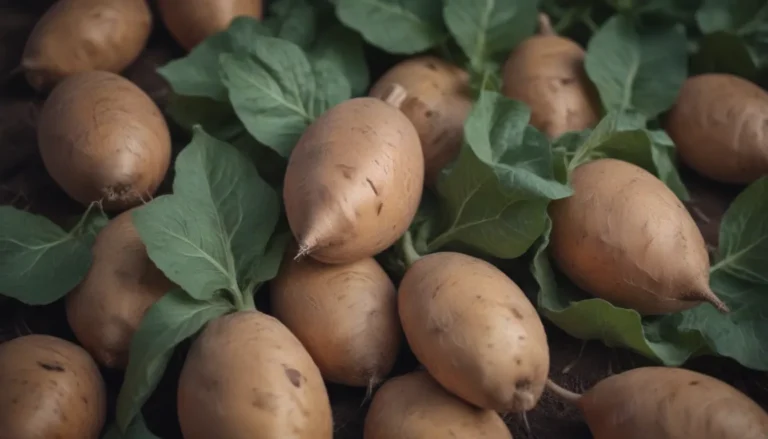Understanding the Tomato Plant Growth Timeline: Exploring the 7 Stages

When it comes to planting tomatoes, the type of tomato you choose can significantly impact the time it takes for your plants to grow and produce fruit. Growing tomatoes can be a rewarding experience, especially when you understand the various stages of growth your plants go through. From germination to ripening, each phase plays a crucial role in the development of your tomato plants.
The Germination Stage: Where it All Begins
The first stage of a tomato plant’s life cycle is germination. This phase occurs when you sow tomato seeds, typically four to six weeks before the average final frost date in your area. When started indoors, these seeds sprout within six to eight days after planting. It’s essential to provide a warm and sheltered environment with plenty of light or sunshine for optimal germination.
During this stage, keep a close eye on your seedlings as they begin to emerge from the soil. This is the starting point of your tomato plant’s journey towards producing delicious fruits.
Early Growth: Developing Strong Roots and Leaves
As your tomato plant progresses, it enters the early growth stage where seedlings start to develop a robust root system. Additionally, the plant begins to grow its true leaves, which will be crucial for photosynthesis. It’s recommended to continue nurturing your plants indoors, ensuring the soil remains moist but not waterlogged.
Tip: If you notice roots filling the space in their cells or the seedlings drying out quickly, it’s a sign that they are transitioning into the vegetative growth stage. Consider transferring them into a larger pot or the garden for continued development.
Vegetative Growth: Thriving in the Garden
Transplanting your tomato seedlings into the garden or a container marks the start of the vegetative growth stage. Ideal soil temperatures between 65 to 70 degrees Fahrenheit are necessary for successful transplanting. During this phase, you’ll witness vines and lush leaves rapidly growing over the next 20 to 25 days.
The tap roots of the plant will extend downwards to anchor the plant while shallow roots in the topsoil absorb essential nutrients. This stage is vital for the plant’s overall development and sets the foundation for future stages of growth.
Tasks during the Vegetative Growth Stage:
- Transplant seedlings into the garden or a container
- Monitor soil temperatures
- Ensure vines and leaves are flourishing
Flowering: A Sign of Growth and Progress
The flowering stage of a tomato plant occurs when the plants reach a height of about 12 to 18 inches, and small yellow flowers start to bloom. Determinate tomatoes produce all their flowers simultaneously, while indeterminate types will continue to flower throughout the season.
During this phase, fluctuations in temperature can impact flower production. Watch out for signs of flower loss, which may occur when daytime temperatures exceed 85 degrees Fahrenheit or drop below 55 degrees Fahrenheit at night. Proper care during this stage is crucial for a successful harvest.
Pollination: Nature’s Mechanism at Work
Pollination is a crucial stage in the growth of tomato plants. Tomato flowers pollinate themselves with the assistance of wind, insects like bumblebees, and movement around the plants. Successful pollination leads to the development of fruit, while unsuccessful pollination can result in flower drop.
Warning: High temperatures above 85 degrees Fahrenheit can hinder pollen movement between the male and female plant parts, leading to failed pollination and fruit formation.
Fruit Formation: The Beginning of Harvest
Once a flower is successfully pollinated, it transitions into the fruit formation stage. Over the next two to three weeks, small green fruits resembling marbles begin to appear on the plant. The initial growth may be slow, but a rapid growth period follows, lasting three to five weeks.
During this phase, it’s essential to support fruit development by fertilizing the plant with an NPK ratio lower in nitrogen and higher in phosphorous and potassium. Adequate watering and proper care are key to ensuring the fruits reach their full potential.
Ripening: Harvesting the Fruits of Your Labor
The final stage of a tomato plant’s growth is ripening, where the fruits mature and are ready for harvest. Optimal temperatures ranging between 68 and 77 degrees Fahrenheit are ideal for ripening tomatoes. To facilitate the ripening process, it’s crucial to manage the plant’s water and light levels effectively.
Tips for Ripening Tomatoes:
– Reduce watering to encourage ripening
– Control sunlight exposure for optimal fruit quality
You’ll know your tomatoes are ripe when they exhibit a tangy fragrance, have an even color from stem to blossom end, and feel firm yet slightly yielding to the touch. This stage marks the culmination of your tomato plant’s growth journey, from seed to harvest.
Understanding the Entire Growth Process
In conclusion, the growth of a tomato plant is a fascinating journey that involves seven distinct stages: germination, early growth, vegetative growth, flowering, pollination, fruit formation, and ripening. While the timeline may vary depending on the tomato cultivar or variety you choose, the overall process remains consistent.
Different tomato varieties exhibit varying growth rates, with some early cultivars ready for harvest in less than 50 days, while others may take up to 100 days or more to mature. By understanding the stages of growth and providing the necessary care at each phase, you can cultivate healthy and productive tomato plants in your garden.
Remember, patience and attention to detail are key when it comes to growing tomatoes successfully. Embrace the unique journey of each plant as it transforms from a tiny seed into a bountiful harvest of delicious fruits. Happy gardening!
Source:
– Purdue University: Tomatoes Not Ripening





